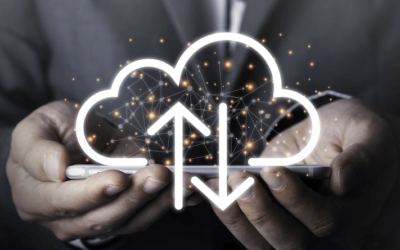While employees don’t have malicious intentions when they get lax about security, they still account for 40% of breaches and malware infections. IT security is simply not something at the top of their priority list. How do you keep data safe with a remote workforce?
Keep Data Safe With a Remote Workforce with Virtual Private Networks (VPNs)
The first step your organization can take to keep data safe with a remote workforce is to create a VPN for your business. There are tools and software to do this for free, but paid VPNs can offer more security features than “boxed” solutions. Additionally, paid VPN providers can usually connect more devices, including mobile phones which are historically hard to run through a VPN.
VPNs allow you to create secure internet connections by routing your data through a private tunnel to your network; in other words, it’s a fake connection that removes your information completely from the picture during internet operations. A VPN hides the IP address of the device using it, making it safer to access emails and websites from that device.
VPNs also encrypts data as it is sent or received, further securing a remote workforce.
VPNs are easy to use and cost-effective. They do not affect workflow or productivity, but they allow the remote employee the freedom to work from anywhere.
Multi-Factor Authentication Will Help Keep Data Safe with a Remote Workforce
Multi-Factor Authentication (MFA) is a security feature that can secure the devices themselves by asking for two forms of ID before the employee can log in. This may be a password combined with a “push” to a mobile device, a combination of biometrics and text messages, and many other combinations. The employee is required to provide “something they know” in combination with access to “something they have.” If the device is lost or stolen, a cybercriminal will also need another device (usually a mobile phone) as well as the password to log onto the computer.
Using multi-factor authentication is far easier than you think. It’s easy to implement and will become second nature to your employees.
Policies and Procedures
Make sure your company’s work-related device usage guidelines are clear. You can clarify what can be accessed on the work devices, as well as what should be blocked from access on personal devices. Make sure your policies are read, signed and understood. Adding a few examples of unacceptable employee behaviors can be helpful for clarity. This “Acceptable Use Policy” can be used company-wide for all employees, not just your remote workforce.
Limit Access
Your remote workforce should only have permissions to use the apps, platforms and programs they use regularly, such as Microsoft Teams. Keep data safe with an identity access and management solution. This will mean taking each remote position and assigning permissions to it based on the job being performed.
Check Your Industry’s Requirements
Remote employee device requirements can vary from industry to industry. Healthcare remote workforces, for instance, have very specific guidelines for how devices are set up within the workspace, what devices can access what information, and more. Make sure your remote workforce understands any device usage guidelines that touch your industry. So is creating a comprehensive cybersecurity plan for your business.
Cybersecurity Awareness Training
Cybersecurity awareness training should be a part of any new employee’s hiring process as well as a regularly occurring class for current employees. Cybersecurity awareness training is a vital part of securing your remote workforce. So is creating a comprehensive cybersecurity plan for your business. Let us show you how.
Have You Optimized Your Remote Workforce Experience? Find Out with Our Checklist.
Remote workforce environments have become mainstream. But are you doing everything you can to make remote work safe and productive? We can help you find the holes in your remote setup with our Remote Work Checklist. Check it out!



